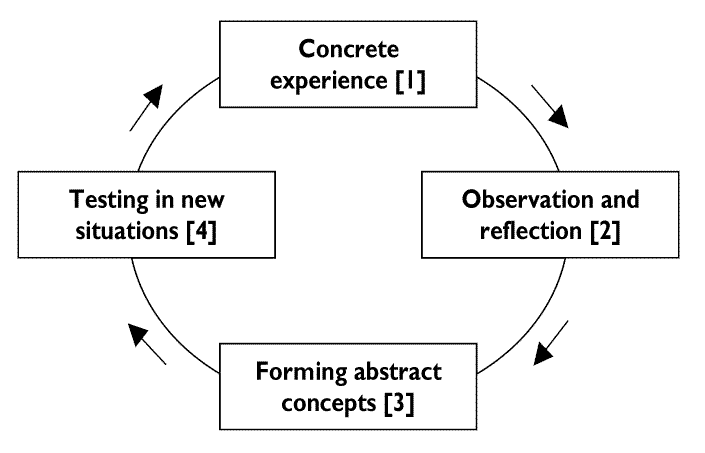|
Here are the notes from
this week's class:
We had a guest, Renee Potter, visit our class this week. Renee
provided information regarding the 100 hour practicum
requirement that is attached to this course. Renee asked
students to complete information forms for this experience and
referred students to the Field Placement website for more
information. The site can be accessed at:
http://www.cortland.edu/fieldplacement
It is important that students in our class are familiar with the
content in the Pre-Student Teaching Handbook. Please
click here and scroll down to find the link for this
handbook. It is essential that students are familiar with all
practicum requirements mentioned in this handbook.
In class, students thought about different
learning theories that they have previously learned. We spent
time discussing the following: Multiple Intelligences Theory (H.
Gardner), Social Learning/Development Theory (L. Vygotsky and A.
Bandura), Constructivist Learning Theory (J. Bruner and Dewey),
Situated Learning Theory (J. Lave), and Experiential Learning
Theory (D. Kolb). It
is important that students understand that theories can inform
teaching practices because they provide a basis for knowing how
students learn and this information identifies different
pathways that teachers can use to facilitate knowledge
acquisition. For example, Multiple Intelligences Theory
distinguishes 8 different ways that people are "smart" and
therefore offers 8 different pathways to help maximize students'
learning. This idea challenges traditional teaching methods
because traditional practices primarily utilize "sit and get"
instruction.
The following information
was shared in class regarding the aforementioned learning
theories: Multiple
Intelligences Learning Theory (1983) - H. Gardner...
Intelligence is not fixed... Levels of intelligence change
throughout life... Everyone has unique ways of being "smart"...
There are 8 distinct ways of "being smart", including:
(1) Logical/Mathematical intelligence ("number/reasoning smart")
(2) Spatial Intelligence ("picture smart")
(3) Bodily-Kinesthetic Intelligence ("body smart")
(4) Musical Intelligence ("music smart")
(5) Interpersonal Intelligence ("people smart")
(6) Intrapersonal Smart ("self smart")
(7) Naturalist Intelligence ("nature smart")
(8) Verbal/Linguistic ("words smart)
The above learning theory helps us as
teachers to consider that there may be at least 8 different ways
to teach the content we're teaching (with numbers, pictures,
music, self-reflection, physical experience, social experience,
nature experience, or with verbal expression). What does this
teach us about teaching? Keep thinking about this question and
we'll continue to come back to it at various points in the
semester. We talked
about the Social Learning/Development Theory and discussed the
main concepts: Learning occurs within a social context; learning
can happen through observation; attention is a critical factor
when learning; modeling is an effective way to help students
learn; and the mind, behavior, and environment all play a key
component to learning.
The Experiential Learning included the
main concepts that fit into the well known quote by Confucius
(450 BC): "Tell me, and I will forget. Show me, and I may
remember. Involve me, and I will understand." D. Kolb has a
famous model that identifies students' concrete experiences,
observations, and identifying abstract conceptual understandings
based on their experiences.
Kolb's famous model focuses on four
learner abilities, represented below. Although this model
contains numbers at different points, Kolb himself argued that
different stages can occur at different times for each learner
so it may be helpful to think of students beginning their
learning cycle at any point in this model:

The Constructivist Learning Theory (1966,
Jerome Bruner) has main concepts that inform teaching
today. They are: (1) emphasis is placed on student learning
(rather than teacher's actions); (2) learners interact with
their environment to gain understanding; (3) learners connect
new experiences/knowledge to prior knowledge for meaningful
learning to occur; (4) learning is an active process; (5)
students learn new ways to learn information as they progress
through their learning process.
The Situated Learning Theory (1991 - Jean
Lave) has several main concepts that can inform teaching
including: (1) social interaction is critical to learning
because learners become involved in a community; (2) learning
normally occurs as a function of experience through the activity
and its context; (3) learning is often thought of as incidental
rather than deliberate; (4) learning requires social interaction
and collaboration.
In class, we spent a considerable amount of time reviewing
course requirements and assignments. This website contains all
pertinent information regarding this course so students are
encouraged to visit each section of the site.
We won't have class next week because
we'll be celebrating Labor Day. Class will meet again on Monday,
September 12.
That's all for this week.
Keep reading, keep learning and keep coming to class! ~Kim
|

